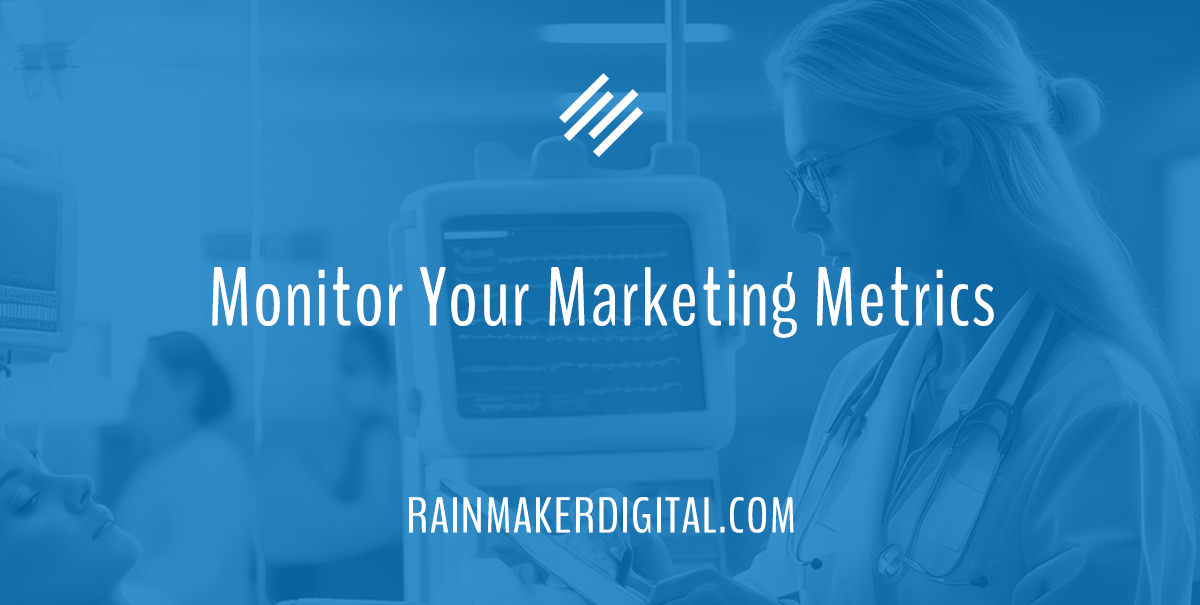“What gets measured gets managed,” says one old marketing proverb (originally attributed to Peter Drucker). Though it’s debatable whether Drucker actually said it, the concept still holds true.
Marketing isn’t a “vibe-based” profession. You can’t run a business on gut. At the same time, it’s not practical to monitor and manage everything — the time, effort, and cost have diminishing returns.
There are only a handful of statistics that really matter for your business — like your body’s vital signs, they are clear measurements of your marketing health. Here are the marketing “vital statistics” you need to understand and monitor.
Return on Investment (ROI)
ROI is simple to calculate: it’s the benefit of an investment divided by the cost. Ideally, you should have a positive return (you receive more benefit than the cost). Every investment in your marketing should pay off. However, some are more complicated than others.
Advertising often has a direct path to return. A content strategy or link-building effort may take more time to bear fruit. Set a reasonable timeline to measure your ROI.
Cost per Acquisition (CPA)
CPA is the cost to acquire a paying customer, usually broken down by campaign or channel.
Optimal CPA varies by industry, but usually it should be less than ⅓ of what you expect the customer’s total lifetime value to be. Consider how much it costs you to bring in a new customer every time you create a new campaign or evaluate one that’s already run.
Conversion Rate
Conversion rate is the percentage of users who take a desired action. Often this is used to determine the success of a campaign or landing page. There must be a specific action associated with this conversion — sign up, buy, schedule. Good conversion rates will be between 2 to 5%; more is obviously better.
Bounce Rate
Bounce rate measures how many users have accessed a page on your website or app and “bounced” immediately — so leaving within 10 seconds without triggering a conversion or clicking through to another page. Too high a bounce rate means that people are coming to your page and realizing it doesn’t actually fit what they were looking for.
Your bounce rate should be less than 40%.
Click-Through Rate (CTR)
CTR compares how many people click a specific link to the number of total users that view a webpage or email. This stat is particularly important for email.
If you’re doing permission-based marketing through a channel like email, people have already chosen to listen to you — they should be clicking through. CTR should be around 2-3% minimum, maybe even higher for B2B.
Engagement Rate
Engagement rate is a measurement of how much an audience interacts with social media content relative to how many people in that audience viewed the content. Likes, shares, comments, saves, and other specialty actions (depending on platform) are all included, but views are not.
A good engagement rate depends on your industry and channel, but most benchmarks are in the 3% range. And it’s not impossible to build significantly better engagement rates with time and investment.
Stay On Top of Your Vital Signs
Like your heart rate, blood pressure and other well-known “vital signs,” marketers need to keep an eye on these six vital statistics to make sure the business remains in good health. Use these tips to get started measuring your marketing success. And if you need a hand, we’re here to help. Just drop us a line, anytime.
Best Regards,
David Brandon
Copywriter
Rainmaker Digital Services
